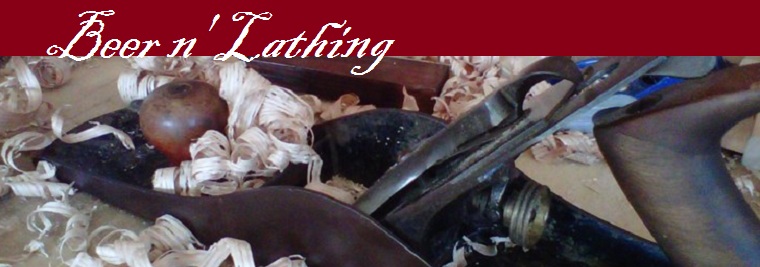Happy New Year!!!
I hope everyone has their resolutions listed and is ready to take on the New Year. It's going to be a great year! Now that the obligatory happy has been complied with, LET'S GET IN THE SHOP!!!
It's a little bit chilly in the garage (um, shop), so I pulled out the space heater that I adopted when I bought this house few years back. It looks like the electrical cord was spliced in order to extend the length. It's a rather poor job that was done with a couple of twist caps and some electrical tape. It will do for the time being but will need to be replaced in the future (that's "Air Force Safety" talking). With the space heater running and doors closed, the working temperature was soon comfortable.
During the last posting, I had realized that the height of the separators were too long and had taken a 'break' to think things through.
After test fitting the separator that I had previously trimmed, I decided that it would work and used some double sided tape to flush trim all 15 separators to the same size...again.
I rushed the process and the tape slid from one of the pieces, making a little dimple in the separator and thus reaffirming my decision to only use hand tools on future projects. You can see the offending little separator below; it is the third one down.
After a little sanding I put the original three separators back in and did a little glue-up. I also tacked them in place using brad nails. Those of you with any woodworking experience or any foresight what-so-ever may realize that I just glued-up and brad nailed 3 separators...of 15. 15 is the magic number.
Since I lack both experience and foresight, I measured and cut another dado using the "measuring scrap" from the day prior. Correction, I used the scrap to measure and then the allen wrench chisel to cut out the dado.

I got three more separators installed and decided that I could lay out the remaining cuts and do them all at once. Of course I decided this once I cut into my "measuring scrap" and then made dado for a separator at 1.5 inches instead of 3 because I held the ruler backwards.
Needing a new strategy, I used a small metal ruler and used a razor to mark the lines as precisely as possible, the rest was up to luck. The framing square was used to ensure my lines were square to the back of the shelf. A little over-kill, but I dropped and broke the small carpenter's square early that day.
I made short work of the dados on the top side.
After completing the top side, I moved on to marking the bottom.
Ah, that took much less time. There is a lesson to be learned here about chiseling out part of a knot, especially one that has epoxy to ensure that it doesn't fall out. I will make a list of lessons learn after the completion of the project, it will need a post all to itself.
After completing the dados, I glued and tacked 11 separators leaving the last one until I figure out how to make the horizontal shelves.
[Editor's note: if you look closely below, the fifth separator from the left is crooked. Not only did I glue up the separator not in the dado accidentally, but I also used brad nails to tack it into place. Doh! I'm still trying to figure out how to fix that the next time I visit the shop.]




































